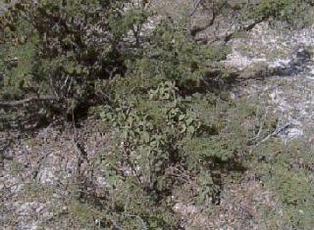WaterProducer-Greenhouse™ Project
Environmental Impact Assessment 2
Environmental Impact Assessment
by Kathleen McNary Wood and Nicholas Turner
Summary (full text is available for purchase)
This report addresses the potential environmental impacts associated with the construction and operation of the Grand Turk Water-producing Greenhouse Project. The proposed development aims to create a sustainable source of fresh water which will in turn be used for hydroponics crop production and public water supply on the island of Grand Turk.
The proposed development site is an old farm that has fallen into disuse and is known as the Crisson Plantation. The baseline environmental parameters of the site are typical of the geographic region and are not of exceptional quality due to the historical use of the site. It is therefore unlikely that the proposed development will have any large-scale environmental effects. Some areas of concern include:
by Kathleen McNary Wood and Nicholas Turner
Summary (full text is available for purchase)
This report addresses the potential environmental impacts associated with the construction and operation of the Grand Turk Water-producing Greenhouse Project. The proposed development aims to create a sustainable source of fresh water which will in turn be used for hydroponics crop production and public water supply on the island of Grand Turk.
The proposed development site is an old farm that has fallen into disuse and is known as the Crisson Plantation. The baseline environmental parameters of the site are typical of the geographic region and are not of exceptional quality due to the historical use of the site. It is therefore unlikely that the proposed development will have any large-scale environmental effects. Some areas of concern include:
- Rare and Endemic Species - The proposed development site has a history of development and is currently being grazed by livestock. It is therefore not a pristine habitat. Nevertheless, there are [five] plant species and three insect species that are endemic to the region that were noted during the site investigations. Special considerations and mitigation measures will be taken during the course of development to ensure the welfare of these species.
- Potential Pollution of Land, Air and Water - The proposed agricultural and hydroponics components of the proposed development will incorporate the use of maintenance chemicals in the form of fertilizers, pesticides and herbicides. Environmental impacts associated with these chemicals can include pollution of land, water and air resources as well as threats to wildlife. These impacts can be mitigated by using integrated pest management practices and organic fertilizers.
- Social and Economic Concerns - The lack of fresh water and produce on the island of Grand Turk means that the primary objectives of the proposed development will have a net positive impact on social welfare. The proposed development will create employment, provide training and supply the public with a much-needed resource. These positive impacts are expected to offset any unexpected social consequences, which may arise.
- The Use of Wind Generated Electricity - It has been estimated that the proposed development project will have an electrical requirement equivalent to 15% of the current production of electricity on Grand Turk. This should not place undue stress on the system, as the power company, TCU, are currently operating under capacity. However in the interest of sustainability and economics, the option of solar and wind turbine generation may be incorporated. Noise impacts may result and appropriate mitigation measures will be undertaken to ensure that these effects are minimised.
- Deep Well Extraction of Cold Water - In order to source water of approximately 15 degrees C, it will be necessary to drill wells of +/- 500 metres in depth. The quality of water is suitable for the intended project. However, the zone of investigation did not yield ideal temperature measurements. Target temperature measurements could be obtained at deeper depths, given the existing reverse geothermal gradient. Drilling deeper would result in improved water quality and reduce the source of pollutants from hydrogen sulfide and turbidity.
- Deep Well Disposal of Same - The [return] water will be disposed of into four deep wells of approximately 250 feet in depth. These will be cased to a depth of two-hundred feet in order to reduce the potential for deterioration of the well walls and surrounding bedrock.
- Well Design - The extraction wells will be designed to meet the necessary requirement for their industrial use and public safety. The four, approximately 500 metre deep wells will begin with a 10-inch borehole to 100 metres then continuing as a 4-7/8" borehole to the final depth. These boreholes, reamed out to 7", will be cased and fitted with submersible pumps with a capacity of 1000 US gpm.
- Drilling - The preferred drilling method is reverse air circulation. This drilling method is environmentally friendly and prevents flooding of the drill site, which in the case of saline waters would result in the destruction of vegetation and loss of terrestrial habitat.
Approved by CIDA-INC December 2002.

